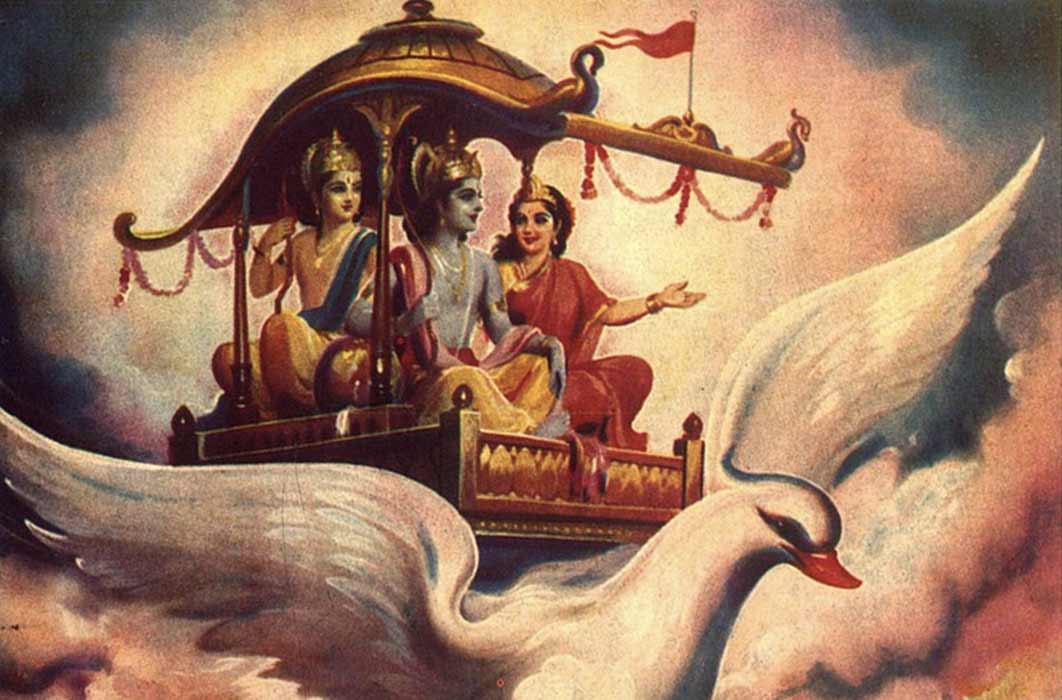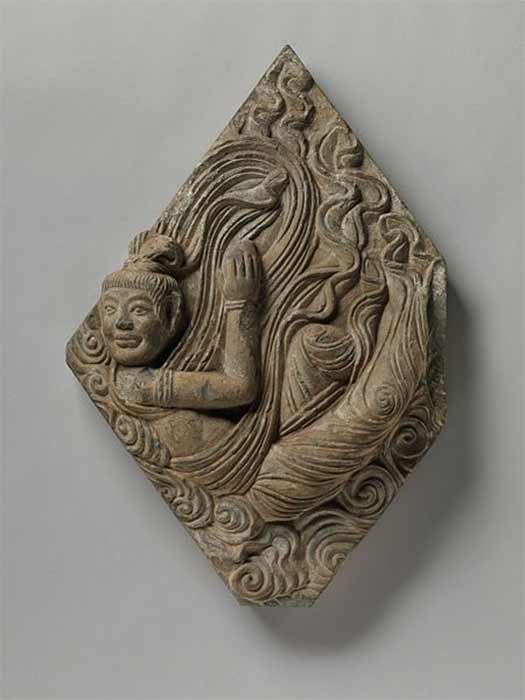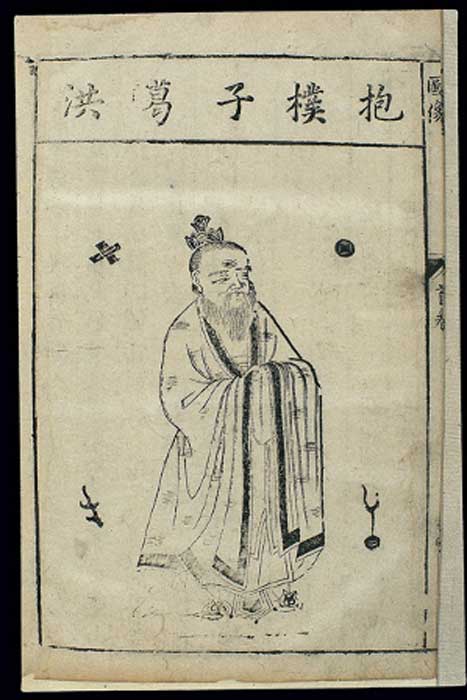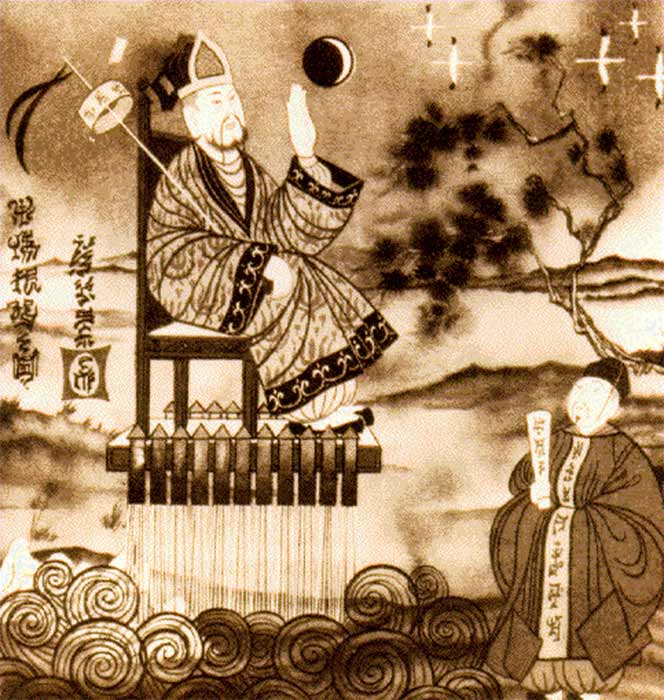
Ancient Chinese And South Asian Flights Of Fancy
It may not be surprising that early cultures pondered the wonder of flight: people in most parts of the world could see birds, bats, and insects flying about, and this likely inspired a great sense of curiosity. Many likely imagined rising aloft, and flying about like a bird — or at least, they could imagine their spirits and deities flying around the heavens, from place to place. But what is curious in historical terms is that a wide variety of sources, from folktales to romances, discussed the use of mechanical devices for flight, and at times even included attempts at technical descriptions of a device’s construction and operation. This historical artifact has eluded most modern studies, with a few notable, brief exceptions such as Berthold Laufer's engaging essay, The Prehistory of Aviation.

Flying Celestial Apsara (Feitian 飛天) (Seventh Century) (Metropolitan Museum of Art)
Chinese Flights of Fancy and Mechanical Flight
Early narratives about flying likely do not reflect historical records of actual mechanized flight, but they do imply an important integration of technological ideas into ideas about the past held by early cultures themselves. Some early cultures had the idea that the cultures that had preceded them were more advanced in terms of the machines that they had created. This can be framed as part of a more general concept of "mechanical mythologies", and it is worth examining how various early texts treated the subject of something as technologically sophisticated as mechanized flight.
The stories recounted here in relation to flight, make a clear distinction between individual entities who flew under their own power — such as the Chinese fei tian (飛天), or "flying beings" — and mechanical devices that flew, marked by a different term in Chinese: fei che (飛車), that is, "flying vehicles". There are two basic story types related to early discussions of flight. The first type involves humans with magical powers, special anthropomorphic entities, or other creatures for example dragons, that were capable of flight on their own. In Chinese culture popular tales often tell of adepts, divine entities, or other beings flying through the air. The xian (仙) were immortals who were capable of flight under their own divine power. They were said to be feathered, and a term that has been used for Daoist priests is yu ke (羽客), meaning "feathered guest." The term fei tian (飛天), which can mean a kind of "flying being", also appears in early tales. These fei tian are zoomorphic and might refer to technology only insofar as creatures in nature, such as birds, inspired the idea that humans might fly given the "technology" of feathers and wings. The second type of story is one that has received far less attention, since its apparent technological nature has fallen outside the realm of folklorists and historians. That type comprises stories or accounts that explicitly describe mechanical devices for flying, devices in which a person operates as a pilot and does not fly under their own power with wings or by way of magic.
According to one ancient legend, a Chinese official named Wan-Hoo attempted a flight to the moon using a large wicker chair to which were fastened 47 large rockets. (Public Domain)
The Flying Qi Gong
The most detailed story of flight in early Chinese sources involves a people called the Qi Gong (奇肱). The earliest source of this tale is a third-century AD work entitled Bowuzhi (博物志 Record of Investigation of Things), attributed to Zhang Hua (張華). The Qi Gong people themselves are mentioned in the Chinese compendium of myths and tales of uncertain date, the Shan Hai Jing (山海經 Classic of the Mountains and Seas). There, they are described as having only one arm, and the characters 奇肱 literally can be translated as "one arm" or "strange arm". This is the story in the Bowuzhi concerning these people and flight: “The Qi Gong people were good at making mechanical devices for killing birds. They could also make flying vehicles that, with a fair wind, traveled great distances. In the time of the Emperor Tang, a westerly wind carried such a car as far as Yuzhou, whereupon Tang had the car taken to pieces, not wishing his own people to see it. Ten years later there came an easterly wind (of sufficient strength), and then the car was reassembled, and the visitors were sent back to their own country, which lays 40,000 li beyond the Jade Gate”.
- Marutsakha Takes Flight: Modern Aviation Based on Ancient Vimana
- Thinking Critically about UFOs: Are They Really Piloted by Extraterrestrials?
- Ancient Automata: The Magic of the Mechanical Realm and Machines Brought to Life
In the Diwang Shiji (帝王世紀 Annals of the Emperors and Kings) of Huangfu Mi (皇甫謐), dating from roughly the same period, the Qi Gong is said to be an individual, not a people as in Zhang Hua’s account. The claim as to the distance travelled is rather remarkable: traditionally, a li can be considered approximately equal to half a kilometer, which means that this "aerial carriage" flew roughly 20,000 kilometers (12,427 miles). Certainly, there must be some corruption in the text, or the passage is simply spinning a fantastic — if mechanically contextualized — tale. The story is repeated in other works through the fifth and sixth century AD.
In the version recounted above, the sentence preceding the discussion of the aerial vehicle states: "The Chi Kung people were good at making mechanical devices for killing birds." Perhaps this implies that these people were keen observers of birds and interested, therefore, in the mechanics of flight. The introduction to the story is about mechanical methods, and there is no mention of magical powers, deities, or fanciful means of flight. The passage also strikes the reader as technologically focused in that it deals with the reassembly of the vehicle.







